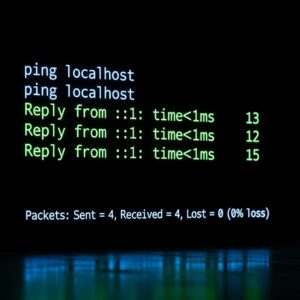The ability to ping localhost is an essential tool for troubleshooting and testing a network. It is a basic network management protocol that enables you to determine whether a particular device on the local network is active, as well as its response time. In this blog post, we will discuss what it means to “ping” localhost, explain how it works, and explore how it is used in network diagnostics and configuration. We will also discuss some of the potential issues that could arise when you ping localhost and how to resolve them. With the help of this blog post, you can gain a better understanding of the concept of pinging localhost as well as how it can be used to troubleshoot and configure your network.
Can you ping localhost?
The answer to the question “Can you ping localhost” is yes. Localhost is a special name given to the local computer or server that you are currently using, so it can be pinged. When you ping localhost, you’re sending a signal to your own device and waiting for a reply to make sure the connection is working. Pinging localhost can be a useful diagnostic tool to check the status of your computer’s network connection, and can also be used to test whether certain services are running properly.
What Does Pinging Localhost Mean?
Pinging localhost means sending a test message to your local computer. When you ping localhost, your computer sends out an echo request to itself. If the echo request is answered, it means that the network connection is working properly. If the echo request is not answered, it means that the network connection is not working. This is a great way to test whether your computer is connected to the internet or not. Pinging localhost is also a useful tool for troubleshooting network issues.
Benefits of Pinging Localhost
Pinging localhost, or the local loopback address, is an easy way to test if your computer’s networking connection is working properly. When you ping localhost, you’re sending a signal to your own computer, which tests the connection between your network card and your computer’s software. This process has several beneficial outcomes, such as troubleshooting and checking your IP address. Firstly, it can help you diagnose and troubleshoot any problems with your computer’s connection to the local network. Secondly, it can be used to check the IP address of your machine. Lastly, it allows you to test your network connection without having to ping an external device.
In conclusion, it is possible to ping localhost to check if a computer’s local network is working properly. This can help troubleshoot network issues on both a home network and a business network. Additionally, pinging localhost can help verify that network hardware, software, and services are running properly. By using the ping command, you can quickly and easily test the connection to localhost and identify any potential issues that need to be addressed.





